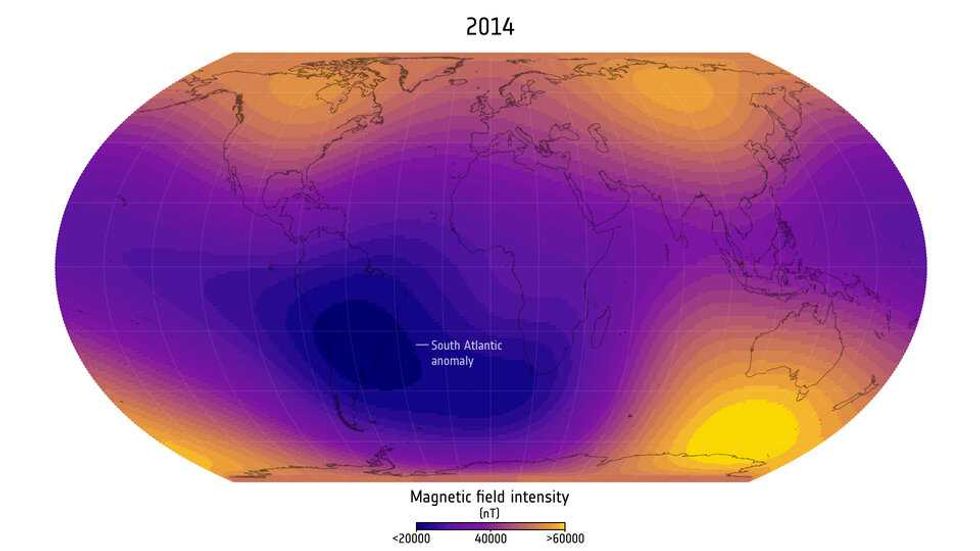Science & Tech
Becca Monaghan
Oct 21, 2025
Comet Lemon to make closest approach to earth on Tuesday
Fox - Fox 29 / VideoElephant
Satellite data has revealed a growing weak spot in Earth’s magnetic field over the South Atlantic – and it’s been expanding steadily for the last 10 years.
The South Atlantic Anomaly – a strange weak spot in Earth’s magnetic field – has been slowly expanding since at least 2014, and now covers an area roughly approaching half the size of continental Europe.
Scientists have also noticed a secondary patch forming further east, towards southern Africa, where the field appears to be weakening at a faster rate.
The European Space Agency’s Swarm satellites have been tracking these changes for over a decade, and recent data suggests the weakening trend may have sped up in the past few years.
“The South Atlantic Anomaly is not just a single block,” explained study lead author Chris Finlay, a professor of geomagnetism at the Technical University of Denmark. “It's changing differently towards Africa than it is near South America. There's something special happening in this region that is causing the field to weaken in a more intense way.”

This unusual behaviour is connected to peculiar features in the magnetic field found where Earth’s liquid outer core meets its solid mantle, called reverse flux patches.
Professor Finlay explains: "Normally we’d expect to see magnetic field lines coming out of the core in the southern hemisphere. But beneath the South Atlantic Anomaly we see unexpected areas where the magnetic field, instead of coming out of the core, goes back into the core.
"Thanks to the Swarm data we can see one of these areas moving westward over Africa, which contributes to the weakening of the South Atlantic Anomaly in this region."
The latest findings from Swarm underline just how changeable Earth’s magnetic field really is. In the southern hemisphere, there’s a single area where the magnetic field is especially strong, while in the northern hemisphere, there are two – one near Canada and another over Siberia.
“When you're trying to understand Earth's magnetic field, it's important to remember that it’s not just a simple dipole, like a bar magnet. It’s only by having satellites like Swarm that we can fully map this structure and see it changing,” Prof Finlay said.
Since Swarm began orbiting, the magnetic field over Siberia has grown stronger, while the one over Canada has weakened.
The strong field area near Canada has shrunk by about 0.65 per cent of Earth’s surface (roughly the size of India) while the Siberian strong field zone has expanded by 0.42 per cent, an area similar to Greenland.
"It’s really wonderful to see the big picture of our dynamic Earth thanks to Swarm’s extended timeseries. The satellites are all healthy and providing excellent data, so we can hopefully extend that record beyond 2030, when the solar minimum will allow more unprecedented insights into our planet," ESA’s Swarm Mission Manager, Anja Stromme, said.
You should also read...
- A ‘gravity anomaly’ from 2007 may have impacted Earth in one unusual way
- 'Spectacular' hidden structures discovered deep beneath Antarctica
How to join the indy100's free WhatsApp channel
Sign up for our free Indy100 weekly newsletter
Have your say in our news democracy. Click the upvote icon at the top of the page to help raise this article through the indy100 rankings.
Top 100
The Conversation (0)














